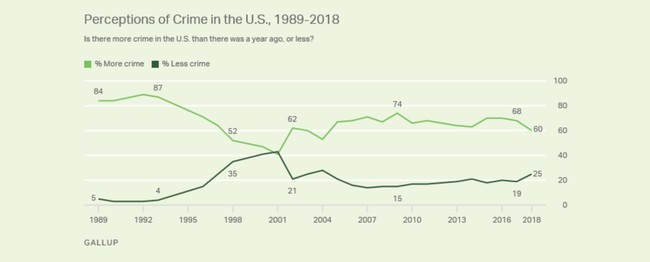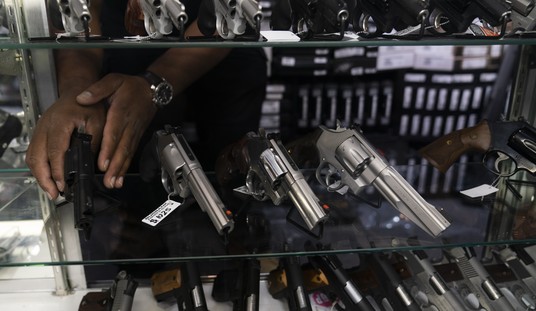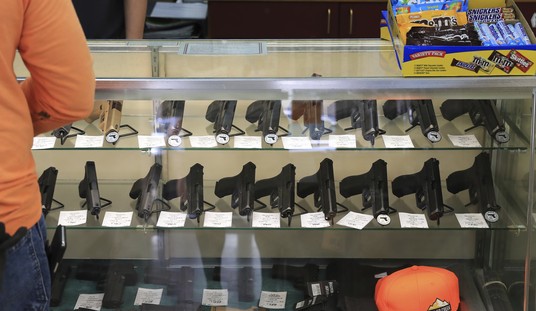Americans can't seem to agree on anything these days, including whether crime rates are rising or falling. Democrat-friendly media outlets like the New York Times are insistent that violent crime is dropping, and they're all too eager to give Joe Biden the credit. As Glenn Thrush wrote just a few days ago:
White House officials believe the numbers are decidedly on their side, even if in some cities rates of violent crime remain elevated from prepandemic levels. But for now, polls suggest the public is less focused on the areas of documentable progress than on the lingering problems — much like with the economy, where the cumulative impact of inflation overshadows a statistical improvement to standards of living.
“Unemployment is down, the economy is up, violence is down and the president’s got a 40 percent approval rating in the state of Michigan,” said Mike Duggan, the mayor of Detroit, where violence has dropped sharply over the last two years.
“It makes you wonder what the definition of success is,” added Mr. Duggan, a Democrat. His city’s homicide rate has declined 18 percent from January 2023 to January 2024.
Dr, John Lott, head of the Crime Prevention Research Center, contends that contrary to FBI stats there's plenty of evidence showing that crime overall is rising, starting with the data from the National Crime Victimization Survey. In 2022, which is the most current year for NCVS statistics, the survey showed the violent victimization rate "increased from 16.5 victimizations per 1,000 persons in 2021 to 23.5 per 1,000 in 2022". At the same time, the FBI's Uniform Crime Report showed a 1.7 % decrease in violent crime.
Lott believes that the FBI stats, which count "reported crimes", are missing out on a large number of crimes that simply aren't being officially recorded.
About 42% of violent crimes are reported to police, and only about 32% of property crimes are reported to police. And we also know that can vary somewhat over time. So, in the past, prior to COVID, the FBI data and the National Crime Victimization data generally tended to move together, but since then they've been going in opposite directions.
Lott notes that arrest rates for violent crimes in cities with a population of more than 1 million have plunged since COVID as well. In 2019, about 42% of violent crimes resulted in an arrest, but by 2022 that figure had plummeted to just 20%. The numbers for property crime arrests are even worse; just 1% of reported and unreported property crimes ended in an arrest. Lott contends that fewer people are reporting crimes because they don't believe that law enforcement is actually going to pursue an investigation, which seems like a reasonable conclusion to me.
Lott also pointed out that surveys show a majority of Americans believe that crime is increasing, despite what the FBI crime stats show. Last November Gallup reported that 63% of respondents said that crime in the United States was an extremely or very serious concern, though only 17% said the same about crime in their local communities. More than 75% of respondents also said that crime was increasing nationwide, and 55% said the same about crime in their hometown.
The problem is that Americans routinely overestimate violent crime rates. With just one exception, every Gallup survey conducted between 1991 and 2018 found a clear majority of respondents believing that crime was getting worse, even though violent crime rates plunged by more than 50% nationwide during that same timeframe.

I don't know that public opinion surveys can tell us much about the actual crime rates in this country. For that, we need to look at statistics, but as Lott points out, those are easy to game. Felony arrests can routinely result in misdemeanor guilty pleas, prosecutors can refuse to charge some defendants at all, and if crimes go unreported to police, that can easily skew the statistics.
Homicide stats are a little harder to fudge, however, and Lott does believe that the reported decline in murders is largely legit. But as he points out, murder is the most serious crime that police departments investigate, and he believes that as departments have had to deal with a staffing shortage and more red tape placed on rank-and-file officers, homicide has become one of the few crimes that are effectively investigated in many major cities.
We won't get the National Crime Victimization Survey for 2023 until this fall, and I'm curious to see if the gap between the FBI's figures and the NCVS results continues to widen. Lott makes a compelling case that we shouldn't just accept the FBI's statistics at face value, nor should we ignore the clear evidence that Americans feel less safe than they did a few years ago. I'm not as convinced as he is that violent crime is continuing to climb, but I do agree that the FBI data doesn't tell us everything we need to know about the number of unlawful incidents, their severity, or their ultimate outcome.
We ran out of time long before I ran out of questions for Dr. Lott, and I hope to pick up the conversation again next week. In the meantime, check out the entire discussion in the video window below, and head over to the Crime Prevention Research Center for more of Dr. Lott's analysis; including a closer look at the flaws in the FBI's crime stats.









Join the conversation as a VIP Member